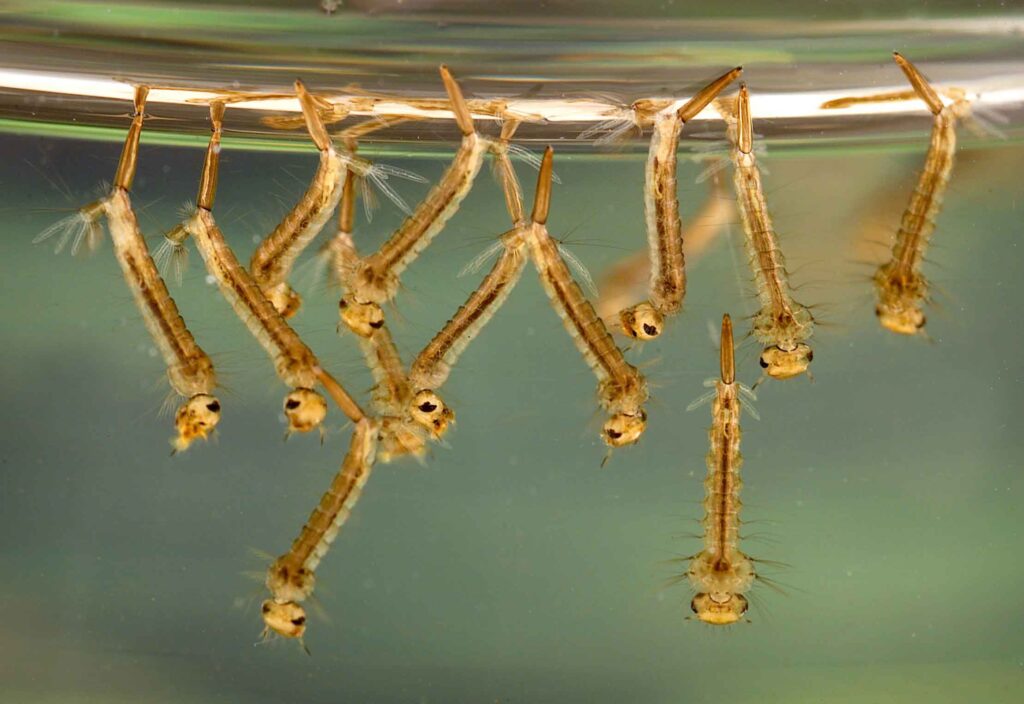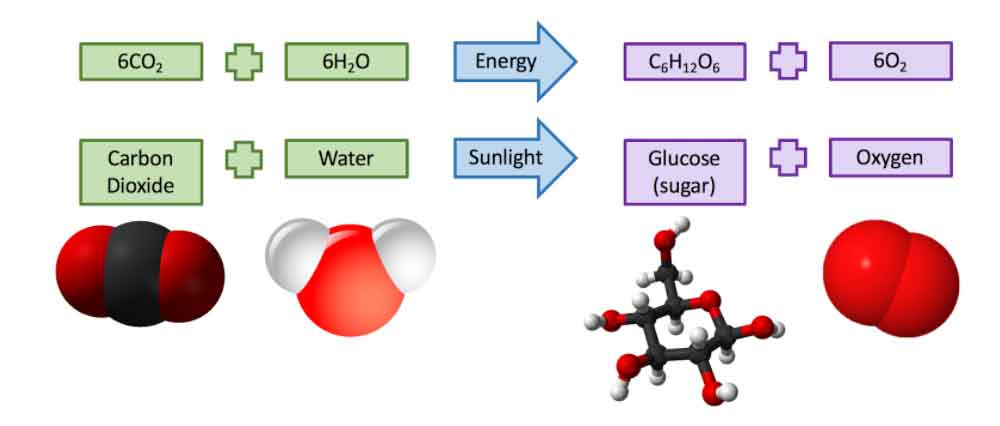The health of any water body is determined by a nearly infinite number of factors— climate, pollution, urban centers, invasive and native species, agriculture, and industry are just a handful of the different things that affect the health of our waterways. However, scientists need ways to understand which water bodies are healthy, which water bodies are degraded, and why our waters are healthy or not. To do this, we assess water quality.
Water quality is a way to describe a water body’s physical, chemical, and biological conditions. A variety of parameters are used to assess water quality, including dissolved oxygen content, temperature, turbidity, salinity, conductivity, pH, nutrients, and coliform bacteria. Let’s break down what each of these parameters mean and what they tell us about the health of our waters.
Oxygen gas (O2) is a necessity for all animals and many other organisms on this planet. Organisms who breathe underwater get their oxygen in the form of dissolved oxygen (DO), which is, simply put, the concentration of O2 incorporated in the water. Oxygen becomes dissolved in the water from two main sources: mixing from the atmosphere and production from photosynthesis.
Stable levels of DO are necessary to sustain aquatic life, so DO is considered a measure of a water body’s ability to support life. However, oxygen levels in the water may drop due to several causes: algal blooms caused by nutrient pollution, increased water temperature, and high ammonia levels, to name a few. If there are low levels of oxygen, known as hypoxia, very few animal species can survive. If there is no DO, a condition known as anoxia is reached. When DO levels drop, animals may move away, suffer adverse health effects, or die.

Temperature is an important parameter when it comes to water quality. One of the reasons why temperature is so important is because it helps to regulate which organisms can survive in a given ecosystem. Organisms have preferred temperature regimes, and it may cause stress for a given individual found in a temperature outside of its biologically preferred range. Another reason why temperature is so important is that it helps control DO levels. Colder waters can contain more oxygen gas, so as waters warm, DO levels may drop. Temperature is also an essential part of water quality assessment because temperature can influence the rates at which chemical reactions take place; in general, warmer temperatures speed up reactions in the environment. In an aquatic ecosystem, these reactions can include decomposition and the dissolution of minerals.
Bodies of water are not always perfectly clear; oftentimes, they are clouded by particles. Scientists measure the degree of cloudiness in a water body with a metric known as turbidity, which is a measure of how much light is scattered due to the presence of particles in the water. Water that is more turbid is seen as more murky and cloudy than less turbid waters. The particles in the water that contribute to turbidity come in two forms: suspended solids and dissolved solids. Suspended solids are generally larger than two micrometers in size, so they are too large to pass through most water filters. Examples of suspended solids are sediments, plankton, particulate from decomposing organisms, and some chemical precipitates. Dissolved solids are less than two microns in diameter, small enough to pass through most filters. Dissolved solids can include salts, natural tannins, and industrial waste and dyes.
Turbidity is imperative to water health for several reasons. One of the most important is that it determines how much light can penetrate into the water. In very turbid water bodies, sunlight may not be able to reach the plants that need light to photosynthesize; this can stress or kill aquatic plants, and it can result in lower DO levels. Another reason turbidity is so important to water quality is that it can be used as an indicator for erosion and anthropogenic contamination. Waters that used to be clearer and over time became cloudy can indicate that nearby human activity, such as development that contributes to erosion or industrial activities that pollute the water with harmful waste, is negatively impacting water bodies.

The amount of salt in a given water body is known as salinity. Salinity helps scientists to determine which kind of ecosystem they are in. Generally, fresh water has less than 0.5 parts per thousand (ppt) salt. Estuarine environments can have a wide range of salinities, and they can be classified as oligohaline (0.5-5 ppt), mesohaline (5-18 ppt), or polyhaline (18-30 ppt). Salt water (euhaline) contains more than 30 ppt salt.
One reason salinity is important is because organisms are typically adapted to survive in a certain salinity range. Salinity also helps control DO levels; in general, as salinity increases, the solubility of oxygen decreases, so increasing salt levels can result in less oxygen available for aquatic life. Salinity may increase when freshwater inflows to an estuary are impeded or stopped, and it may also increase when human activity causes unnaturally high amounts of salts to enter waterways, such as when runoff carries rock salt from roads into streams.
Salinity contributes to conductivity, which is the ability of the water to carry an electrical charge. As more ions, such as dissolved salts, enter the water, the ability to carry a charge increases. Conductivity can also be influenced by temperature, as warmer water can more easily carry a charge. When an increase in conductivity of a water body is detected, it can be a sign of pollutants that have entered the water.
To describe how acidic or basic the water is, we use pH. Here in southern New Jersey, many of our fresh waterbodies are naturally acidic, with many streams in the Pine Barrens having a pH lower than 5.0. Many of the species adapted to survive in the Pine Barrens, such as the Pine Barrens Tree Frog and many native freshwater fishes and plants, are adapted to survive in this low pH water. Human activity, such as development and pollution, threaten to raise the pH of local freshwater streams, which may threaten these native species and make room for nonnative organisms.
Conversely, brackish and saltwater bodies, such as the Barnegat Bay and the Atlantic Ocean, may be threatened by declining pH values. Ocean acidification occurs when dissolved carbon dioxide reacts with water to form carbonic acid, lowering the ocean’s and bay’s pH. Since the Industrial Revolution, the ocean’s pH has decreased by 0.1 pH value; while this may not seem like a lot, the pH scale is logarithmic, so this 0.1 unit change actually means that the ocean has become about 30% more acidic. One reason why this is so harmful to sea life is that many carbonate organisms, such as mollusks like oysters and clams that form their shells from calcium carbonate, would be negatively affected. Ocean acidification lowers the carbonate concentration in the water and can weaken the shells of these organisms.
Nutrients, such as nitrogen and phosphorus, are essential to the survival of marine organisms. However, an excess of these nutrients can harm the bay through a process called eutrophication. Nutrient pollution can come from a variety of nonpoint sources: pet waste, fertilizers, and detergents, just to name a few. The nitrogen and phosphorus from this pollution can wash into the bay when it is carried by runoff. With an excess of nutrients in the water, algae can bloom, turning the water green and blocking light from native seagrasses. Once the algae dies, bacteria breaks down the algae and consumes a lot of the oxygen in the water, lowering DO levels and possibly causing hypoxic conditions.
The final water quality indicator we will discuss is coliform bacteria. Total coliform bacteria live in the intestines of animals and aid in digestion. Some of these bacteria, fecal coliform bacteria, can survive in warmer temperatures and are found in the waste of warm-blooded animals. While most forms of coliform bacteria are not harmful, they can be used as an indicator that a water body has been contaminated by fecal matter, which may carry other harmful pathogens, such as hepatitis A. Fecal coliform levels may be elevated following storm events, as runoff may carry waste into the bay, and as several cities in New Jersey, such as Newark, have combined sewer systems that overflow and can carry untreated wastewater into waterbodies.
Many swimming beaches in Ocean County have a history of closures due to elevated fecal coliform counts. This summer, a team of student researchers supported by the Save Barnegat Bay student grant program has found that of the twelve sites they tested along the Toms River for coliform, five of the sites had a mean coliform count over the 200 colonies per 100 mL water threshold used for beach closures, and all of the sites had at least one day where the colony counts were over this threshold.
So now that we’ve discussed some of the major water quality indicators and what can impact each of these parameters, you may have a question: What can you, as an individual, do to protect our local waters, from our freshwater streams to the Barnegat Bay?
The first is simple: reduce pollution. This can come in several forms. Reducing or eliminating your use of pesticides and fertilizers can help prevent these chemicals from entering waterways. Pesticides such as insecticides and herbicides can be harmful to aquatic life, damaging aquatic ecosystems. In the case of fertilizer, this is especially important for helping to reduce nutrient pollution, which helps to maintain healthy oxygen levels. Picking up waste from your pets is also important, as it keeps excess nutrients and pathogens out of the water.
Other types of pollutants can be damaging to water quality as well. Microplastics, which are any plastics less than 5 millimeters in length, may harm both aquatic organisms and the humans who consume them. Microplastics can either come from plastics that are already small, such as microbeads in face washes, or can be produced when larger plastics break down into small pieces. Microplastics can be consumed by marine organisms and accumulate in their bodies, which may be harmful, as they contain toxic substances. Another recent area of concern scientists have been researching is the presence and effects of pharmaceuticals in water bodies. As the primary function of drugs is to alter biological processes, their presence in streams is cause for concern. Properly disposing of any expired or excess pharmaceuticals at a drug drop-off, rather than flushing them or throwing them out, can help prevent these negative consequences.
Another way individuals can help protect water quality is by planting rain gardens, which is a garden in a shallow, depressed area composed of native plants. These plants then help improve water quality by reducing runoff and facilitating the path from surface water to groundwater by producing spaces with good drainage. This helps reduce nonpoint source pollution that is normally carried by runoff.
Individuals can also install rain barrels in their yards to collect rainwater. These barrels catch rainwater before it can contribute to runoff, and the water can be reused for many outdoor uses.
Finally, anyone can help improve water quality in our local waterbodies by supporting organizations and initiatives designed to support our waterways. Showing support for local plans to install green infrastructure and to implement strict water quality standards can help these initiatives get approved and funded, which can have broad and important impacts on improving and maintaining our water quality. In this way, our streams and the bay can be enjoyed by all for years to come.



